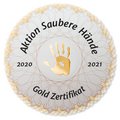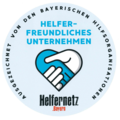![[Translate to englisch:] CT am UKR](/fileadmin/_processed_/f/5/csm_computertomographie_ct_12de50d558.jpeg)
X-ray Diagnostics
Computed tomography (CT)
Computed tomography is an imaging technique that uses X-rays to visualise bodily structures. It is the gold standard for imaging in many areas, such as assessing the lungs or skeleton. It is frequently used (as first choice) in emergency diagnostics and for visualising moving organs such as the heart due to its high temporal and spatial resolution.
How CT works
In technical terms, CT is based on an X-ray cylinder that revolves around the patient while the examination table advances slowly through it. Detectors on the opposite side capture the X-rays, which have been attenuated to a greater or lesser extent by the patient's tissue, as a volume data set within a few seconds and forward them to a computer for further processing. Cross-sectional images of the body can then be calculated in all three directions.
Use of contrast agents
Some examinations require the use of contrast agents containing iodine. This is administered intravenously and is used to visualise blood vessels and soft tissue structures. Particular consideration must be given to pre-existing kidney disease, hyperthyroidism and a tendency to allergies in patients when administering contrast agents. It is only necessary for the patient to abstain from food and drink if they have a known allergy to contrast agents or if this is expressly requested. In some cases, a contrast medium or water must be consumed beforehand to improve the visibility of changes in the stomach and intestines.
Reduced exposure to radiation
Significant technological advances in recent years have made it possible to reduce CT radiation exposure many times over, so that today all examinations can be performed with significantly reduced exposure to radiation. It is even possible to perform specific examinations using low levels of X-ray radiation (known as low-dose protocols), for example to check for pneumonia, sinusitis or kidney stones. This requires only slightly more radiation than conventional X-rays.
Range of applications
The range of applications for computed tomography has also steadily grown. In addition to purely diagnostic examinations, our department focuses on performing numerous minimally invasive procedures with the highest precision using CT guidance. These include, for example:
- Collecting samples from sites of disease located deep within the body
- Relieving inflammation through drainage
- Providing localised pain relief (e.g. facet joint block)
- Targeted treatment of tumour nodules through localised exposure to heat (e.g. using microwave ablation, MWA)
The Department for X- ray Diagnostics offers all these applications and many more on its three high-performance computed tomographs (SOMATOM Definition Flash, SOMATOM Definition Edge and SOMATOM go.Top).








